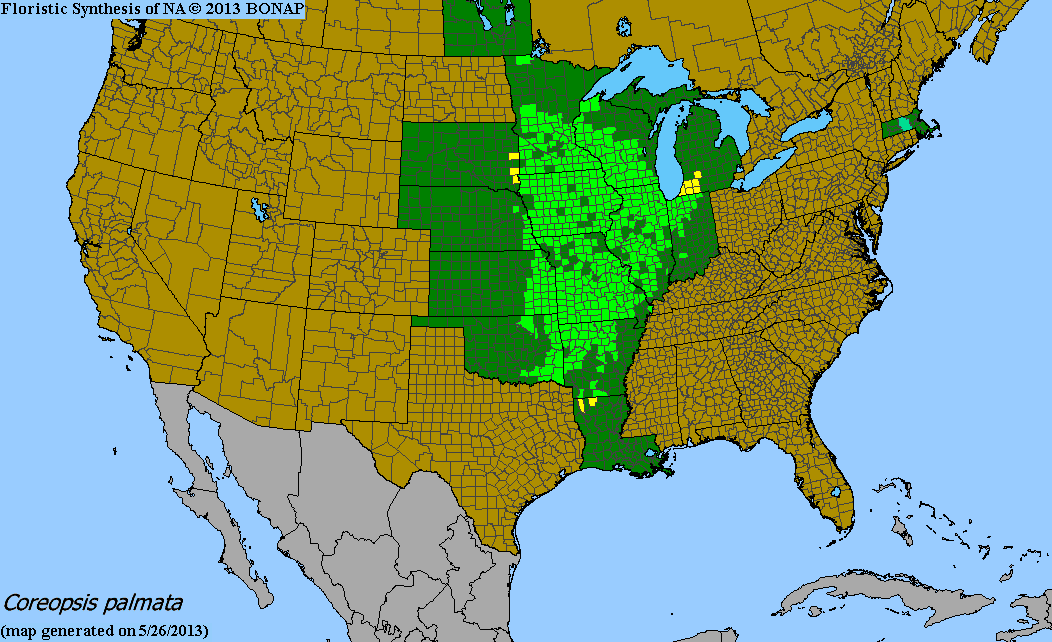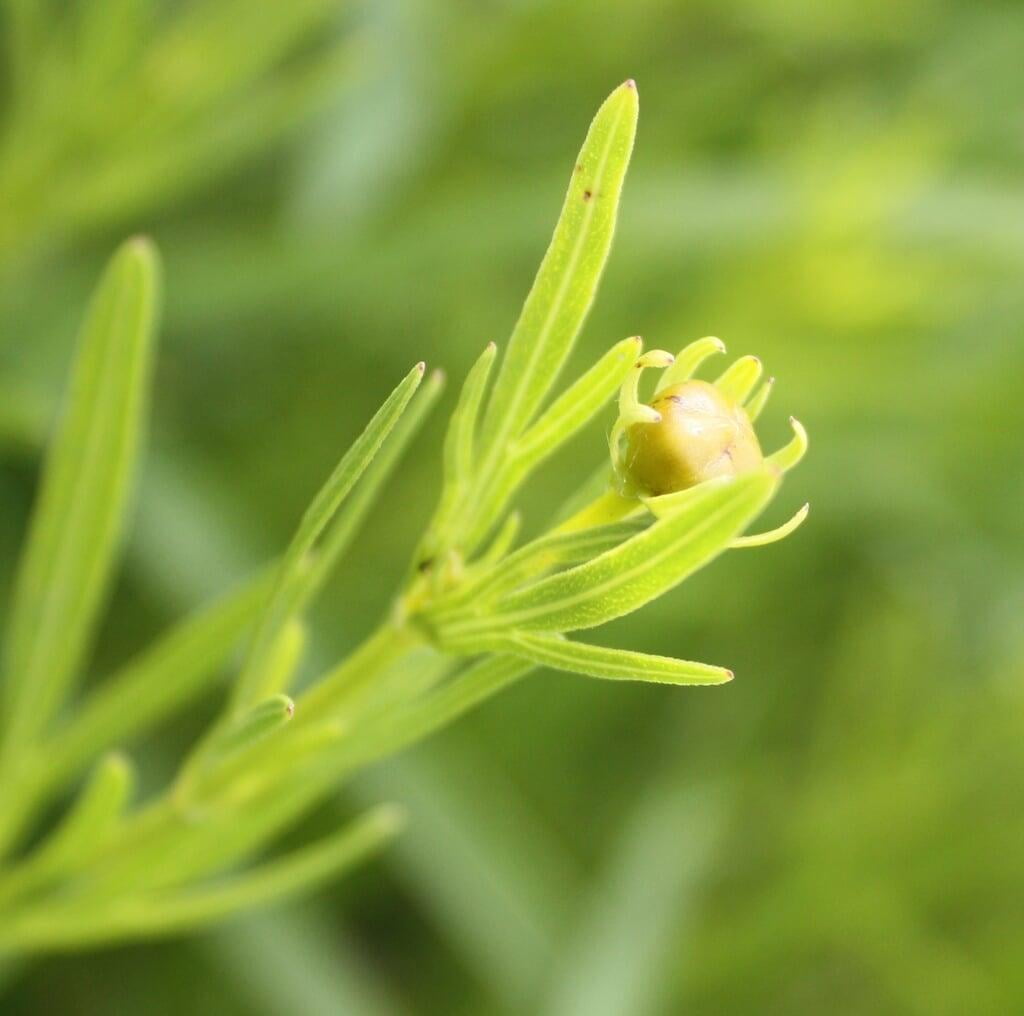Coreopsis palmata
Prairie coreopsis Description:
Coreopsis palmata, commonly known as prairie tickseed, is a perennial plant that is native to North America. It belongs to the daisy family, Asteraceae, and typically grows to a height of 1 to 3 feet (30 to 90 cm).
The plant has finely divided leaves that are arranged in a basal rosette at the base of the plant, while the upright stems are topped with yellow flowers that have red-brown centers. The flowers bloom in early to mid-summer and are about 1 inch (2.5 cm) in diameter.
Coreopsis palmata thrives in well-drained soil and full sun, and is drought-tolerant. It is typically found in rocky prairies, meadows, and wildflower gardens. The plant is attractive to bees and butterflies and is also deer-resistant. It is a great addition to a pollinator garden or a meadow setting.
Native Range:
Prairie coreopsis is native to the central United States, ranging from Minnesota south to Louisiana.
Standard Plant Information:
Plant Height: 1' - 3'
Bloom Time: June - September
Preferred Habitat: Does well in part shade to full sun. Often found in prairies, open woodland, and roadsides.
Sowing:
For most homeowners, the best option is to scatter seed on the ground by hand broadcasting at a minimum of 16-64 pls ounces per acre. For even coverage, we recommend that you broadcast seed in perpendicular rows across the site to ensure even coverage.
You’ll want to broadcast any grass seed first, which will get raked into the soil lightly. Next, it is ideal to mulch the area lightly with either a clean (no seed) straw or preferably with our native Little Bluestem straw, sold at our retail garden centers. After a light mulching is complete, now it’s time to broadcast your native wildflower seeds, which should not be raked into the soil. A good rain or watering is sufficient to cover the seed.
Planting:
Simply dig a hole in the soil slightly larger than the plant’s roots. Ensure that the soil line of the plant is maintained during the transfer (i.e. the plant should be at the same level with the ground as it was in the pot). Pack any loose dirt back around the plant and make sure you water it well the same day to ensure it has the best chance of survival.







